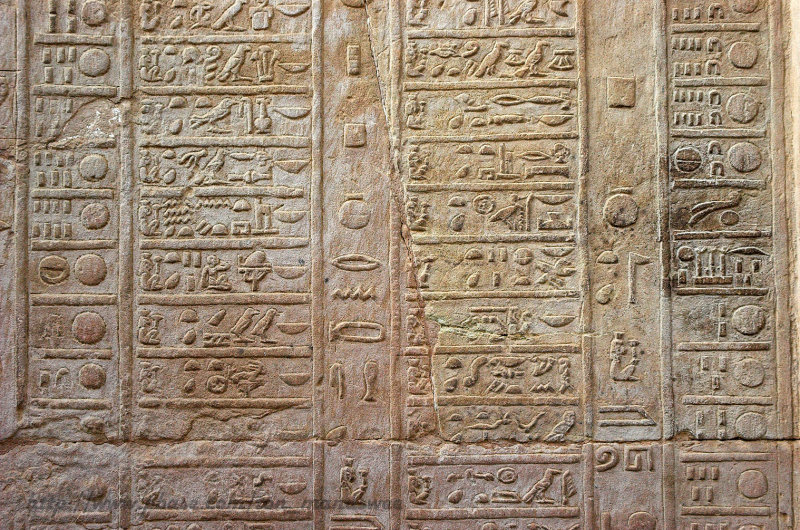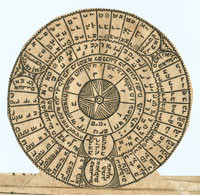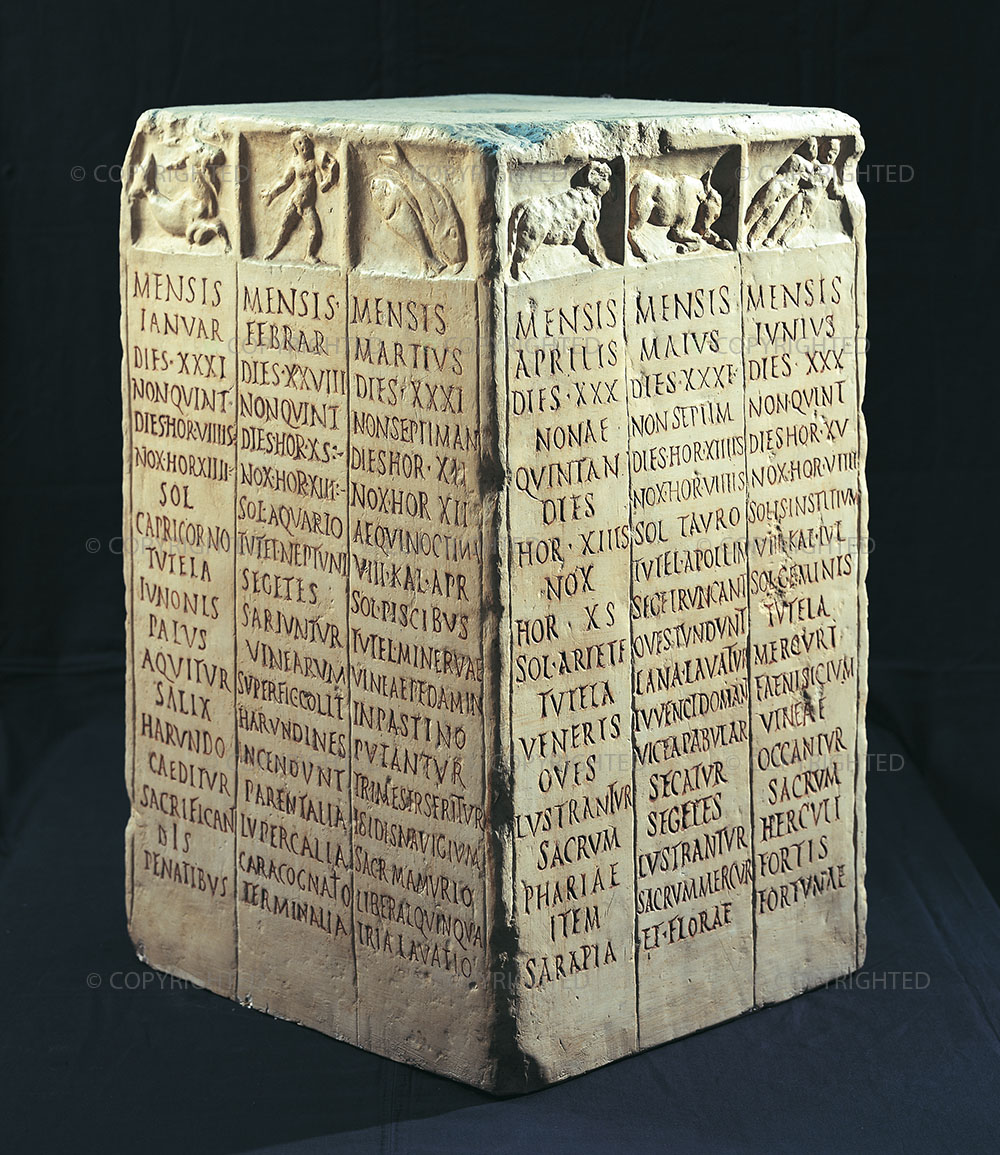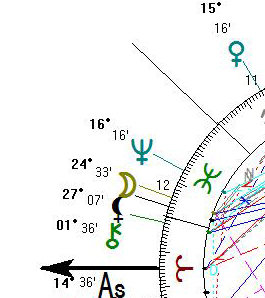|
Calendars
A calendar is a system for organizing days and specifying dates, as well as the physical device (whether paper or electronic) used to record such a system. Calendars have historically been designed for social, religious, agricultural, commercial or administrative purposes (or a combination of all of these). A calendar can also be extended into the future and used as a reminder of future planned events.
Calendar and Date Organization.
Calendar divisions are based on the movements of the Earth and the regular appearances of the Sun and the Moon, and a calendar typically works by dividing time up into units of days, weeks, months and years. Most of these units are based on objectively verifiable astronomical cycles, although the use of weeks within calendars is purely for administrative convenience and is not tied to any astronomical cycle.
Any calendar system also needs to have a starting or reference point , sometimes referred to as a “fiducially epoch” (or just epoch), from which to begin counting. For example, the old Roman calendar used the assumed founding date of the city of Rome; the widely-used modern Gregorian calendar uses the supposed date of the birth of Christ; the Hebrew calendar uses the estimated date of the creation of the world; etc. A particular date, or the occurrence of a particular event, can then be specified with reference to these unit divisions and the starting reference point (e.g. 3rd of May 2013CE).
A variety of standard date formats are in use, differing in the order of date components, component separators, whether leading zeros are included, whether all four digits of the year are written, whether the month is represented numerically or by name, etc. The most commonly used date component sequence is the little-endian sequence day-month-year (e.g. 26/12/13), although the big-endian year-month-day is used in several Asian and European countries (e.g. 2013/12/26), and month-day-year is the norm in the United States and, usually, Canada (e.g. 12/26/13).
Types of Calendar
Almost all calendars divide up the days into months and years, but exactly how they do so varies. Most calendars synchronize their periods with the cycle of the Sun or Moon (or both), although some Ancient Egyptian calendars appear to have been synchronized to the motion of the planet Venus and/or the Dog Star Sirius. Because the period of the Moon does not neatly match the period of the Sun, no calendar can be truly based on both, and so a choice must be made, often incorporating periodic adjustments in order to match the two (a trade-off between accuracy and convenience).
The main types of calendar are:
Solar calendar (e.g. the Persian Calendar, the Gregorian Calendar) is synchronized to the apparent motion of the Sun over the year and thus remains in line with annual seasonal changes. It makes no attempt to match the changes in the Moon, and the division into months is purely nominal.
Lunar calendar (e.g. the Islamic Calendar) is synchronized to the phases of the Moon. Because a lunar month is not an even fraction of a year, a purely lunar calendar tends to drift against the seasons.
Luni-solar calendar (e.g. the Hebrew calendar, the Hindu calendar) is based on a combination of both lunar and solar reckonings (i.e. months are based on lunar months, but years are based on solar years), in which most years have 12 months but every second or third year has 13 (including a leap month) in order to realign with the annual seasons.
Intercalation
The insertion of additional leap days or leap months into some calendar years in order to synchronize the calendar to the seasons or moon phases is called intercalation or embolism.
In the case of lunar and luni-solar calendars, the months (known as lunar months or synodic months) approximate the cycle of the Moon’s phases, a period of about 29.5 days, for which many lunar calendars use alternating months of 29 and 30 days. However, because a lunar month is not an even fraction of a year (there are about 12.37 lunar months in a year), a purely lunar calendar tends to drift against the seasons unless adjusted periodically, such as by the addition of a leap month every two or three years.
In the case of solar calendars, the months are fractions of the tropical or solar year (i.e. the length of time the Sun takes to return to the same position in the cycle of seasons, as seen from Earth). Even with a solar calendar, though, the number of days in a year is not an exact whole number (approximately 365.242), so that a system of adding an extra leap day every fourth year (leap years) is instituted in many solar calendars, or more complex variations thereof.
Ancient Calendars
Stonehenge
Ancient megalithic structures like Stonehenge probably had some calendrical function
Ancient peoples used the apparent motion of the celestial bodies (the Sun, the Moon, the planets and the stars) through the sky to determine the seasons, the length of the month, and the length of the year. Many early civilizations developed calendars independently.
The oldest known calendar is a lunar calendar discovered near the town of Crathes in Scotland, which dates to around 8,000BCE. It consists of 12 pits in an arc 54 metres long that seem to correspond with 12 lunar months, plus an added correction to bring the calendar back into sync with the solar year on the date of the winter solstice. The megalithic standing stones of Stonehenge in southern England, begun around 3100BCE and rebuilt and added to many times over the succeeding 1,500 years, served various purposes, one of which was the determination of seasonal or celestial events, such as lunar eclipses, solstices, etc.
The Sumerian calendar is the earliest written calendar of which we have any evidence, dating back to as early as c. 3000BCE. The Sumerians used a luni-solar calendar, dividing the year into 12 lunar months of 29 or 30 days (for a total of 354 days), each beginning with the sighting of the new moon, plus an additional leap or intercalary month inserted as needed by decree of the priesthood, in order to synchronize with the 365-day solar year. The months were often referred to simply as “first month”, “second month”, etc, but also went by the names Nisanu, Aru, Simanu, Dumuzu, Abu, Ululu, Tisritum, Samna, Kislimu, Ṭebetum, Sabaṭu, Adar and Ve-Adar (the leap month).
The Babylonians carried on most of the ideas and knowledge of the Sumerians. They used a very similar luni-solar calendar to the Sumerians, with 12 lunar months plus an intercalary month inserted as needed. The Babylonians improved the overall accuracy of their calendar still further by using 12 years of 12 months followed by 7 years of 13 months, in a 19-year cycle. The artificial administrative concept of weeks was not introduced until the time of the late Babylonians and the Chaldeans, and they named the days after the Sun, Moon and the five known planets (the number seven was also widely held as auspicious by many ancient cultures, and enshrined in the creation myth of the Bible, thus assuring the legacy of the seven-day week).
The principal ancient Egyptian calendar was a solar calendar with a year that was 365 days long, divided into 12 months of 30 days each, with five extra festival days added at the end of the year. Prior to this system, the Egyptians used a lunar calendar but, realizing that it was not able to help predict important agricultural events like the annual flooding of the Nile, the Egyptians became the first to begin using a calendar based purely on the solar year. In fact, for a period of over 2000 years, Egypt may have had three different calendars working concurrently: a stellar calendar for agriculture, a solar calendar of 365 days for civil administration, and a quasi-lunar calendar for festivals. Initially, the Egyptian solar calendar was not intercalated with leap days, and so astronomical events gradually varied in their incidence over the years. But in about 238BCE, Ptolemy III ordered that an extra day be added to every fourth year for increased accuracy, similar to the Julian leap year. The months were divided into three weeks of ten days each, and the year as a whole was divided into 3 seasons, akhet or Inundation (of the Nile), peret or Growth (Winter) and shemu or Harvest (Summer).
The ancient Hebrew or Jewish calendar, at least since the time of the Babylonian exile (538BCE) was a luni-solar calendar based on that used by the Sumerians and Babylonians, using twelve lunar months alternating between 29 and 30 days, with the addition of an intercalary month every two or three years to synchronize the lunar cycles with the longer solar year. The months were named Tishrei, Marcheshvan, Kislev, Tevet, Shevat, Adar, Nisan, Iyar, Sivan, Tammuz, Av and Elul (the intercalary month was referred to as Adar I), and the beginning of each lunar month was based on the appearance of the new moon. The starting point of Hebrew chronology is the year 3761BCE, the putative date of the creation of the world as described in the Old Testament.
The ancient Mayan calendar, along with those of other related Mesoamerican civilizations, were perhaps the most complex of all, and by some measures the most accurate, with an error margin of just 2 days over 10,000 years. They used two different parallel systems: the 260-day Sacred Round, and the 365-day Vague Year. The Sacred Round consisted of 13 numbered “months”, each of which contained 20 named days (Imix, Ik, Akbal, Kan, Chicchan, Cimi, Manik, Lamat, Muluc, Oc, Chuen, Eb, Ben, Ix, Men, Cib, Caban, Eiznab, Cauac and Ahau), and this was the calendar used for purposes such as naming individuals, predicting the future, deciding on auspicious days for battles, marriages, etc. Some other Mesoamerican cultures used a series of twenty 13-day tricenas instead. The Vague Year, on the other hand, consisted of 18 named “months” (Pop, Uo, Zip, Zotz, Tzec, Xuc, Yaxkin, Mol, Chen, Yax, Zac, Ceh, Mac, Kankin, Maun, Pax, Kayab and Cumku) of 20 numbered days each, with a five-day period at the end, known as Uayeb, which was considered unlucky. These two different cycles only coincided every 52 years, a period which was therefore considered in a similar way to modern centuries. The Maya fully expected to see history repeat itself every 260 years, after the full cycle of their calendar system.
The ancient Chinese calendar (or Han calendar) was a luni-solar calendar dating back to the Han Dynasty of the 2nd Century BCE, although similar luni-solar calendars had been in use there for almost a millennium by that time. It, or a version of it, is still used for civil purposes today in China, Japan, Korea, Vietnam, etc. The Han calendar used 12 lunar months of 29 or 30 days with 7 intercalary months every 19-year cycle (similar to the entirely unrelated Babylonian system). Under this system, the Sun and Moon returned to their exact original relative positions after every 76 years. A reform in 1281 fixed the Chinese calendar at the equivalent of 365.2425 days, the same accuracy as the Gregorian calendar established in the West some three centuries later.
The ancient Greek calendar (also known as the Attic or Athenian calendar) was a luni-solar calendar, consisting of 12 named months of 29 or 30 days each (totalling 354 days), with a leap month added every third year to synchronize with the solar year. The months were named Hekatombaion, Metageitnion, Boedromion, Pyanepsion, Maimakterion, Poseideon, Gamelion, Anthesterion, Elaphebolion, Mounichion, Thargelion and Skirophorion, and were grouped into the familiar four seasons of summer, autumn, winter and spring. The additional leap month was achieved by repeating an existing month, so that the same month name was used twice in a row. However, there was also a “conciliar calendar”, maintained parallel to the main “festival calendar”, which divided the year according to the 10 (or later 11, 12 or 13) phylai, or sub-divisions of the Athenian population. Because of this variation over time, documents or events dated by this method are notoriously difficult to translate into modern calendar dates. A third, less official, calendar of seasons (using star risings to fix points in time) was also used for agricultural or maritime purposes.
The Islamic calendar was (and still is today) a lunar calendar consisting of 12 months alternating between 29 and 30 days, totalling 354 days in a year. In each thirty year cycle, the 2nd, 5th, 7th, 10th, 13th, 16th, 18th, 21st, 24th, 26th and 29th years are leap years of 355 days. The Islamic calendar is used by Muslims to determine the proper days on which to observe Ramadan (the annual fast), to attend Hajj (pilgrimage to Mecca), and to celebrate other Islamic holidays and festivals. However, as a purely lunar calendar, the months tend to drift against the seasons (and with other solar-based calendars) so that it was not practical to used for agricultural purposes, and historically other calendars have been used for such purposes. Islamic years are counted from the Hijra in 622CE (the year when Muhammad emigrated from Mecca to Medina).
There were of course many other alternative calendars (e.g. Gaulish, Hindu, Zoroastrian, etc), each with their own underlying philosophy, and often with their own idiosyncratic twists and foibles. But the above-mentioned – along with the Roman calendar described below – are probably the most important and influential.
Roman, Julian and Gregorian Calendars - Ancient Rome
 The Julian and Gregorian calendars most people use today were adapted from the Ancient Roman calendar.
The Julian and Gregorian calendars most people use today were adapted from the Ancient Roman calendar.
The earliest Roman calendar consisted of 304 days divided into 10 months (Martius, Aprilis, Maius, Iunius, Quintilis, Sextilis, September, October, November and December), with the winter days after the end of December and before the beginning of the following March not being assigned to any month. To account for these “unassigned” winter days, an additional two months, Ianuarius and Februarius, were added as a stop-gap measure by Numa Pompilius in the early 7th Century BCE, resulting in 12 lunar months of 29 or 30 days, totalling 355 days, with a leap month of 22 or 23 days, known as Mercdeonius or Intercalaris, added from time to time as dictated by the ruling Roman High Priest.
Roman years were dated from the founding of the city of Rome, which was originally assumed to be about 750BCE, although this date was later revised. However, both in everyday conversation and usually in official records, dates were commonly referred to according to the names of ruling consuls.
Complications arose in this system because there were two consuls ruling at any one time, and because identical or similar names were common. The Romans initially used an eight-day week (based on its market cycle, and inherited from the Etruscans of antiquity) for commercial and administrative purposes, although as the empire expanded it encountered more and more cultures using the seven-day week, which it eventually adopted. The Romans also used a rather convoluted system of calculating the days of the month backwards from the publicly-declared fixed days of Kalends (1st day of the month), Nones (5th or 7th day of the month, depending on the particular month’s length) and Ides (13th or 15th day of the month).
Later, when these conflicting and confusing systems became completely inoperable, the Roman calendar was drastically overhauled, on the advice of the Greek astronomer Sosigenes, by Julius Caesar during his third consulship in 46BCE, reforms that were completed by Augustus two years later.
The resulting Julian calendar became the predominant calendar throughout most of Europe (as well as some Muslim countries), until superseded by the Gregorian calendar in 1582.
The Julian calendar was a solar calendar consisting of a regular year of 365 days divided in to 12 months, with a leap day added in February (Februarius) every four years. The month names were the same as the earlier Roman calendar, although the lengths of the months were adjusted to the 30 and 31 day months (with a rogue 28/29 day month in February) we are familiar with today.
Although the Julian calendar was widely used throughout the Middle Ages, different countries still used various local systems to count or identify years. These were usually regnal years, based on the reign of a particular sovereign or leader, in the Biblical fashion, although cyclical events (e.g. the 4-year Greek Olympiads, the 12-year Chinese animal cycle, etc) were used in some cases. Individual days of the year were usually indicated in relation to one of the church feasts, e.g. the 4th day after Easter in the 6th year of the reign of King xxxxx. To replace this rather awkward system, the Christian monk Dionysius Exiguus in the 6th Century, introduced the Anno Domini (AD) system of counting years from the putative (probably erroneous) birth of Christ. The new system caught on only gradually and was not widely used until the 11th to 14th Century, and the use of the BC sequence, counting backwards from the birth of Christ, was not introduced until as late as the 17th Century. The lack of a year zero (the year before AD1 is 1BC) and the awkward necessity of counting backwards for dates BC (before Christ) were drawbacks to this system, but it has nevertheless remained a much more popular reference point than other proposed alternatives, such as the Byzantine church’s use of the creation of the world (which they calculated to be 5509BC), or the Jewish creation date (calculated as 3761BC). The more recent (non-religious, and more politically correct) use of CE and BCE, using the abbreviations for Common Era (or Current Era or Christian Era) and Before Common Era instead of AD and BC, has not changed that reference date, which has now become the de facto standard worldwide.
The Gregorian calendar (also sometimes referred to as the Western calendar or Christian calendar or New Style calendar) was a minor refinement to the Julian calendar, introduced by Pope Gregory XIII in 1582, based on a proposal by Aloysius Lilius. The Julian year, with its leap year every four years, was still 11 minutes 14 seconds longer than the exact solar year on average, and this error had been accumulating for centuries. The Gregorian calendar reform reduced the number of leap years, so that years divisible by 100 (that would otherwise be leap years) were now not to be considered leap years, unless the year was also divisible by 400. This had the effect of correcting the length of a year from 365.25 days to a more accurate 365.2425 days, so that, while the Julian calendar carried forward an error of about 11 minutes each year, the Gregorian calendar was accurate to within just 2.6 seconds a year. This is accurate enough that an extra leap day to compensate for accumulating errors will not be needed until about the year 4000. The 1582 reform also dealt with the cumulative effect of the 11-minute Julian calendar errors (dating back to the First Council of Nicaea in 325CE) by completely skipping the 10 days from 5th to 14th October in the year 1582.
Although many Protestant and Eastern Orthodox countries continued to use the old Julian calendar for a time, the Gregorian calendar was slowly adopted throughout Europe (when the Gregorian calendar was finally adopted in Britain in 1752, for example, an 11-day correction needed to be made to account for further accumulated errors). Most branches of the Eastern Orthodox Church still use the Julian calendar (or the Revised Julian calendar) for calculating the dates of their moveable feasts, like Easter, and it is still used by the Berber people of North Africa. The Gregorian calendar, though, is now used throughout most of the Western world as well as in many parts of Asia, and it has become the unofficial global standard, recognized by most international institutions, including the United Nations.
Various “improvements” to the Gregorian calendar system have been proposed over the years, such as Marco Mastrofini’s proposed World Calendar or Moses Cotsworth’s International Fixed Calendar, but none have ever gained enough traction to merit the huge administrative inconvenience involved.
~Christian Hoffmann 12/2018 |



